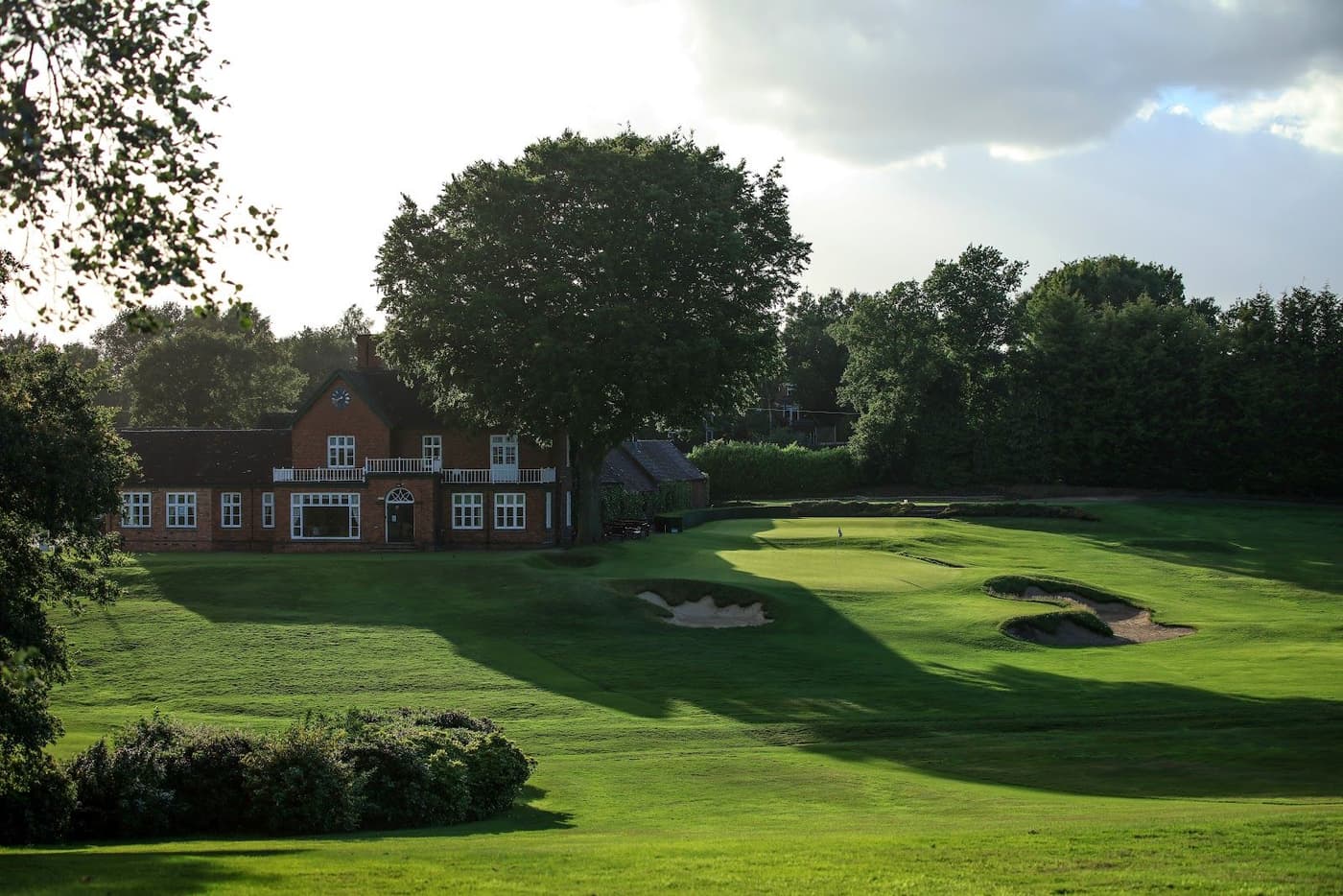
Blackwell
Bromsgrove, England
- AddressAgmore Rd, Bromsgrove B60 1PY, UK
Six times an Open Championship Regional Qualifying course, Blackwell Golf Club is the quintessential English gem and has a proud history dating back to 1893. The club’s original 9-hole course occupied part of Viscount Windsor’s Hewell Grange estate, a couple of miles south of where today’s 18-hole layout is located. In 1923, Herbert Fowler and Tom Simpson were hired to set out the club’s new course within a compact 102-acre tract of land just outside the village of Blackwell.
Today, this course extends to a moderate 6,260 yards, playing to a par of 70, with only three par fives on the card: the 490-yard 4th has a green that’s heavily protected by deep bunkers to the front, the 486-yard 8th doglegs downhill to the left from the tee and the 512-yard 12th features a very long narrow bunker that runs along the right side of the fairway – we suspect this is a modern hazard that’s been added to deal with a drainage problem or a similar conditioning issue.


It’s known for a fact that Bobby Jones played the course immediately after he won the Open at Hoylake in 1930. What’s not so certain is the story that he allegedly based the design of the famous 12th hole at Augusta National on the 181-yard 13th at Blackwell. Now that might just be taking the realms of speculation a bit too far but, if it’s true, then it’s some accolade for a heavily-bunkered little beauty in Worcestershire.
Tom Doak made a point of playing Blackwell in 2016 and awarded the course a rating of six out of ten. He commented as follows in his Christmas 2017 Confidential Guide update:
“My late friend Woody Millen, a member at Piping Rock and Palmetto, was also an overseas member of Blackwell, which I’d never heard of. He always played it off as being more about the club than the golf course, but I knew him well enough to know the golf must be pretty good, too. The course is tightly packed into a small parcel between suburban Birmingham and open farmland – it’s a par 70 and the longest of the three par-fives is 512 yards. As a consequence, they’ve planted a few too many trees to try and keep up the level of difficulty, as if the difficult set of short holes were not up to the task. The camaraderie of the club is no doubt enhanced by having the 10th tee and 18th green play up to within a few feet of the clubhouse, and the 1st tee right up against the building, so that all your friends are out to watch you finish [and possibly gamble on your approach to the last].”
The club has recently developed a 10-year masterplan and is restoring Simpson’s original design strategies with the help of Frank Pont from the Clayton, DeVries and Pont design firm.
Course Reviews
Leave a Review
This course has not been reviewed.
If you have played this course, consider .
Thanks for the review
Your review has been successfully submitted and will be reviewed for approval.
Course Reviewed
You’ve already submitted a review for this course.
Course Architect
View All
Tom Simpson spent only five years as a barrister before leaving behind the stifling offices at the Temple in London for a career as a golf course architect with Herbert Fowler in 1910.


